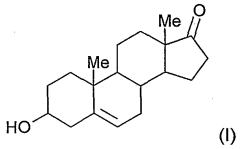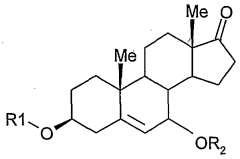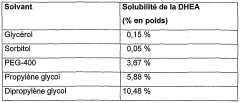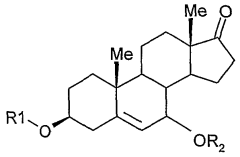How to Integrate Dipropylene Glycol for Optimal Beauty Care?
JUL 7, 20259 MIN READ
Generate Your Research Report Instantly with AI Agent
Patsnap Eureka helps you evaluate technical feasibility & market potential.
DPG in Beauty Care: Background and Objectives
Dipropylene glycol (DPG) has emerged as a versatile and valuable ingredient in the beauty care industry, offering a wide range of applications and benefits. The integration of DPG into beauty care products has been driven by its unique properties and the evolving demands of consumers for more effective and multifunctional cosmetic formulations.
The beauty care industry has witnessed significant technological advancements over the past few decades, with a growing focus on developing products that not only enhance appearance but also promote skin health and overall well-being. In this context, DPG has gained prominence due to its ability to address multiple concerns simultaneously, making it an attractive option for formulators and manufacturers.
DPG is a colorless, odorless, and hygroscopic liquid that belongs to the family of glycol ethers. Its chemical structure allows it to function as a solvent, humectant, and emollient, making it highly versatile in various beauty care applications. The compound's low toxicity and excellent compatibility with a wide range of ingredients have further contributed to its popularity in the cosmetics industry.
The primary objective of integrating DPG into beauty care products is to enhance their performance, stability, and sensory attributes. By leveraging DPG's multifaceted properties, manufacturers aim to create formulations that offer improved moisturization, better ingredient solubility, and enhanced product texture. Additionally, DPG's ability to act as a penetration enhancer for active ingredients has opened up new possibilities for developing more effective skincare and haircare products.
As the beauty care market continues to evolve, there is a growing demand for products that cater to specific consumer needs and preferences. This trend has led to an increased focus on customization and personalization in cosmetic formulations. DPG's versatility makes it an ideal candidate for addressing these market demands, as it can be easily incorporated into a wide range of product types and adapted to suit different skin and hair types.
The integration of DPG in beauty care also aligns with the industry's shift towards more sustainable and environmentally friendly practices. As a synthetic compound derived from propylene oxide, DPG offers a more stable and consistent alternative to some natural ingredients, while still maintaining a relatively low environmental impact. This aspect has become increasingly important as consumers and regulatory bodies place greater emphasis on sustainability and eco-friendly product development.
Looking ahead, the optimal integration of DPG in beauty care products presents both opportunities and challenges for the industry. Researchers and formulators are continuously exploring new ways to harness the full potential of DPG, while also addressing any potential limitations or concerns associated with its use. This ongoing research and development efforts are expected to drive further innovations in beauty care formulations, leading to more effective, versatile, and consumer-friendly products in the coming years.
The beauty care industry has witnessed significant technological advancements over the past few decades, with a growing focus on developing products that not only enhance appearance but also promote skin health and overall well-being. In this context, DPG has gained prominence due to its ability to address multiple concerns simultaneously, making it an attractive option for formulators and manufacturers.
DPG is a colorless, odorless, and hygroscopic liquid that belongs to the family of glycol ethers. Its chemical structure allows it to function as a solvent, humectant, and emollient, making it highly versatile in various beauty care applications. The compound's low toxicity and excellent compatibility with a wide range of ingredients have further contributed to its popularity in the cosmetics industry.
The primary objective of integrating DPG into beauty care products is to enhance their performance, stability, and sensory attributes. By leveraging DPG's multifaceted properties, manufacturers aim to create formulations that offer improved moisturization, better ingredient solubility, and enhanced product texture. Additionally, DPG's ability to act as a penetration enhancer for active ingredients has opened up new possibilities for developing more effective skincare and haircare products.
As the beauty care market continues to evolve, there is a growing demand for products that cater to specific consumer needs and preferences. This trend has led to an increased focus on customization and personalization in cosmetic formulations. DPG's versatility makes it an ideal candidate for addressing these market demands, as it can be easily incorporated into a wide range of product types and adapted to suit different skin and hair types.
The integration of DPG in beauty care also aligns with the industry's shift towards more sustainable and environmentally friendly practices. As a synthetic compound derived from propylene oxide, DPG offers a more stable and consistent alternative to some natural ingredients, while still maintaining a relatively low environmental impact. This aspect has become increasingly important as consumers and regulatory bodies place greater emphasis on sustainability and eco-friendly product development.
Looking ahead, the optimal integration of DPG in beauty care products presents both opportunities and challenges for the industry. Researchers and formulators are continuously exploring new ways to harness the full potential of DPG, while also addressing any potential limitations or concerns associated with its use. This ongoing research and development efforts are expected to drive further innovations in beauty care formulations, leading to more effective, versatile, and consumer-friendly products in the coming years.
Market Analysis for DPG-Enhanced Beauty Products
The global beauty care market has shown significant growth in recent years, with an increasing demand for innovative and effective products. The integration of Dipropylene Glycol (DPG) in beauty care formulations has emerged as a promising trend, offering potential for enhanced product performance and consumer satisfaction.
Market research indicates a rising consumer preference for multifunctional beauty products that deliver multiple benefits in a single formulation. DPG-enhanced beauty products align well with this trend, as DPG's versatile properties can contribute to improved texture, stability, and efficacy of various cosmetic and personal care items.
The skincare segment, in particular, presents a substantial opportunity for DPG-enhanced products. With consumers becoming more knowledgeable about skincare ingredients, there is a growing demand for products that offer hydration, improved absorption of active ingredients, and long-lasting effects. DPG's ability to act as a solvent, humectant, and penetration enhancer makes it an attractive ingredient for skincare formulations.
In the haircare sector, DPG-enhanced products are gaining traction due to their potential to improve the performance of conditioning agents and styling products. The market for leave-in treatments and serums incorporating DPG is expected to expand, driven by consumer desire for products that provide long-lasting moisture and protection against environmental stressors.
The fragrance industry also stands to benefit from DPG integration. As a solvent and fixative, DPG can enhance the longevity and diffusion of fragrances, addressing consumer demands for longer-lasting scents. This application is particularly relevant in the growing market for natural and clean fragrances, where traditional synthetic fixatives may be less desirable.
Geographically, North America and Europe currently lead in the adoption of DPG-enhanced beauty products, driven by advanced formulation technologies and consumer awareness. However, the Asia-Pacific region is expected to witness the fastest growth, fueled by a rapidly expanding middle class and increasing disposable incomes in countries like China and India.
Market analysts project that the global market for DPG-enhanced beauty products will experience robust growth over the next five years. This growth is attributed to factors such as increasing consumer awareness of ingredient benefits, the rise of clean beauty trends, and ongoing product innovations by major beauty brands and indie companies alike.
To capitalize on this market opportunity, beauty care companies should focus on developing targeted DPG-enhanced formulations that address specific consumer needs and preferences. Additionally, investing in consumer education about the benefits of DPG in beauty care products will be crucial for driving adoption and market expansion.
Market research indicates a rising consumer preference for multifunctional beauty products that deliver multiple benefits in a single formulation. DPG-enhanced beauty products align well with this trend, as DPG's versatile properties can contribute to improved texture, stability, and efficacy of various cosmetic and personal care items.
The skincare segment, in particular, presents a substantial opportunity for DPG-enhanced products. With consumers becoming more knowledgeable about skincare ingredients, there is a growing demand for products that offer hydration, improved absorption of active ingredients, and long-lasting effects. DPG's ability to act as a solvent, humectant, and penetration enhancer makes it an attractive ingredient for skincare formulations.
In the haircare sector, DPG-enhanced products are gaining traction due to their potential to improve the performance of conditioning agents and styling products. The market for leave-in treatments and serums incorporating DPG is expected to expand, driven by consumer desire for products that provide long-lasting moisture and protection against environmental stressors.
The fragrance industry also stands to benefit from DPG integration. As a solvent and fixative, DPG can enhance the longevity and diffusion of fragrances, addressing consumer demands for longer-lasting scents. This application is particularly relevant in the growing market for natural and clean fragrances, where traditional synthetic fixatives may be less desirable.
Geographically, North America and Europe currently lead in the adoption of DPG-enhanced beauty products, driven by advanced formulation technologies and consumer awareness. However, the Asia-Pacific region is expected to witness the fastest growth, fueled by a rapidly expanding middle class and increasing disposable incomes in countries like China and India.
Market analysts project that the global market for DPG-enhanced beauty products will experience robust growth over the next five years. This growth is attributed to factors such as increasing consumer awareness of ingredient benefits, the rise of clean beauty trends, and ongoing product innovations by major beauty brands and indie companies alike.
To capitalize on this market opportunity, beauty care companies should focus on developing targeted DPG-enhanced formulations that address specific consumer needs and preferences. Additionally, investing in consumer education about the benefits of DPG in beauty care products will be crucial for driving adoption and market expansion.
Current Applications and Challenges of DPG in Cosmetics
Dipropylene glycol (DPG) has become a versatile and widely used ingredient in the cosmetics industry, finding applications in various beauty care products. Its multifunctional properties make it an essential component in formulations ranging from skincare to haircare and fragrances. In skincare, DPG serves as an effective humectant, helping to attract and retain moisture in the skin, thereby improving hydration and reducing dryness. It also acts as a solvent, enabling the incorporation of other active ingredients and enhancing their penetration into the skin.
In haircare products, DPG is utilized for its conditioning properties, helping to improve the manageability and texture of hair. It aids in reducing frizz and enhancing shine, making it a valuable ingredient in leave-in conditioners and styling products. Additionally, DPG's ability to dissolve and disperse other ingredients makes it useful in creating stable and homogeneous hair care formulations.
The fragrance industry heavily relies on DPG as a solvent and fixative. It helps to dissolve and blend various fragrance components, ensuring a uniform and long-lasting scent. DPG's low volatility contributes to the extended wear of perfumes and colognes, making it an indispensable ingredient in many fragrance formulations.
Despite its widespread use, the integration of DPG in cosmetics faces several challenges. One primary concern is the potential for skin irritation in some individuals, particularly those with sensitive skin. While DPG is generally considered safe for use in cosmetics, some users may experience adverse reactions, necessitating careful formulation and testing to minimize these risks.
Another challenge lies in achieving the optimal concentration of DPG in different product types. Too little may not provide the desired benefits, while excessive amounts can lead to a greasy or sticky feel, compromising the overall user experience. Formulators must strike a delicate balance to maximize DPG's benefits while maintaining product aesthetics and performance.
The increasing demand for natural and sustainable cosmetic ingredients poses another challenge for DPG integration. As a synthetic compound, DPG may not align with the preferences of consumers seeking all-natural or "clean" beauty products. This trend has prompted research into alternative natural humectants and solvents that can potentially replace or complement DPG in cosmetic formulations.
Regulatory compliance presents an ongoing challenge for cosmetic manufacturers using DPG. While it is approved for use in cosmetics in many countries, regulations regarding its concentration and labeling requirements may vary. Staying abreast of these regulations and ensuring compliance across different markets adds complexity to product development and distribution.
In haircare products, DPG is utilized for its conditioning properties, helping to improve the manageability and texture of hair. It aids in reducing frizz and enhancing shine, making it a valuable ingredient in leave-in conditioners and styling products. Additionally, DPG's ability to dissolve and disperse other ingredients makes it useful in creating stable and homogeneous hair care formulations.
The fragrance industry heavily relies on DPG as a solvent and fixative. It helps to dissolve and blend various fragrance components, ensuring a uniform and long-lasting scent. DPG's low volatility contributes to the extended wear of perfumes and colognes, making it an indispensable ingredient in many fragrance formulations.
Despite its widespread use, the integration of DPG in cosmetics faces several challenges. One primary concern is the potential for skin irritation in some individuals, particularly those with sensitive skin. While DPG is generally considered safe for use in cosmetics, some users may experience adverse reactions, necessitating careful formulation and testing to minimize these risks.
Another challenge lies in achieving the optimal concentration of DPG in different product types. Too little may not provide the desired benefits, while excessive amounts can lead to a greasy or sticky feel, compromising the overall user experience. Formulators must strike a delicate balance to maximize DPG's benefits while maintaining product aesthetics and performance.
The increasing demand for natural and sustainable cosmetic ingredients poses another challenge for DPG integration. As a synthetic compound, DPG may not align with the preferences of consumers seeking all-natural or "clean" beauty products. This trend has prompted research into alternative natural humectants and solvents that can potentially replace or complement DPG in cosmetic formulations.
Regulatory compliance presents an ongoing challenge for cosmetic manufacturers using DPG. While it is approved for use in cosmetics in many countries, regulations regarding its concentration and labeling requirements may vary. Staying abreast of these regulations and ensuring compliance across different markets adds complexity to product development and distribution.
Existing DPG Integration Methods in Beauty Care
01 Use as a solvent in cosmetic formulations
Dipropylene glycol is commonly used as a solvent in various cosmetic and personal care products. It helps to dissolve and blend different ingredients, improving the overall stability and consistency of the formulation. This versatile compound can be found in a wide range of products, including skincare, haircare, and fragrances.- Solvent and carrier in cosmetic formulations: Dipropylene glycol is widely used as a solvent and carrier in various cosmetic and personal care products. It helps to dissolve and disperse active ingredients, enhancing the overall effectiveness of the formulation. Its ability to mix with both water and oil makes it versatile in different types of cosmetic products.
- Humectant and moisturizing agent: Dipropylene glycol acts as a humectant and moisturizing agent in skincare and haircare products. It attracts and retains moisture, helping to keep the skin and hair hydrated. This property makes it valuable in formulations designed to improve skin texture and prevent dryness.
- Fragrance fixative and enhancer: In perfumes and fragranced products, dipropylene glycol serves as a fixative and enhancer. It helps to stabilize volatile fragrance compounds, prolonging the scent's longevity. Additionally, it can enhance the overall fragrance profile by blending and harmonizing different scent components.
- Viscosity modifier in liquid formulations: Dipropylene glycol is used as a viscosity modifier in various liquid formulations. It can help adjust the thickness and flow properties of products, improving their application and stability. This is particularly useful in creating products with desired textures and consistencies.
- Preservative booster and antimicrobial enhancer: While not a preservative itself, dipropylene glycol can act as a preservative booster and enhance the antimicrobial properties of other ingredients. It can help improve the efficacy of preservative systems in cosmetic and personal care products, contributing to their overall stability and shelf life.
02 Application in cleaning and degreasing products
Dipropylene glycol is utilized in cleaning and degreasing formulations due to its excellent solvent properties. It can effectively dissolve oils, greases, and other contaminants, making it suitable for industrial cleaning applications, household cleaners, and automotive products.Expand Specific Solutions03 Use as a humectant and moisturizer
In personal care and cosmetic products, dipropylene glycol functions as a humectant and moisturizer. It helps to attract and retain moisture, keeping the skin hydrated and improving the overall texture and feel of the product. This property makes it valuable in lotions, creams, and other skincare formulations.Expand Specific Solutions04 Application in pharmaceutical formulations
Dipropylene glycol is used in various pharmaceutical formulations as a solvent and carrier for active ingredients. It can help improve the solubility and stability of certain drugs, enhancing their bioavailability and effectiveness. This compound is found in both oral and topical pharmaceutical products.Expand Specific Solutions05 Use in industrial applications
Dipropylene glycol has diverse industrial applications beyond personal care and pharmaceuticals. It is used in the production of polyurethanes, as a component in hydraulic fluids, and as a plasticizer in various materials. Its low toxicity and favorable properties make it suitable for a wide range of industrial processes and products.Expand Specific Solutions
Key Players in DPG Production and Beauty Industry
The integration of Dipropylene Glycol in beauty care is at a mature stage, with a significant market presence and established applications. The global beauty and personal care market, valued at over $500 billion, provides ample opportunities for this ingredient. Major players like L'Oréal, Shiseido, and Beiersdorf have incorporated Dipropylene Glycol into their product lines, leveraging its versatility as a solvent and humectant. Technological advancements by companies such as COSMAX and Gattefossé have further refined its usage, enhancing product formulations and efficacy. The competitive landscape is diverse, with both multinational corporations and specialized firms like Bloomage Biotechnology contributing to innovation in this space.
L'Oréal SA
Technical Solution: L'Oréal has developed advanced formulations incorporating dipropylene glycol (DPG) for optimal beauty care. Their approach involves using DPG as a solvent and humectant in various skincare and haircare products. L'Oréal's research has shown that DPG can enhance the penetration of active ingredients into the skin, improving the efficacy of their products[1]. They have also utilized DPG's moisture-retaining properties to create long-lasting hydration in their formulations. L'Oréal has implemented a precise balance of DPG concentrations, typically ranging from 1-5%, to maximize benefits while minimizing potential irritation[3]. Their innovative use of DPG extends to fragrance fixation in perfumes and colognes, leveraging its ability to stabilize and prolong scent release.
Strengths: Extensive R&D capabilities, global market presence, and diverse product portfolio. Weaknesses: Potential concerns about synthetic ingredients and need for continuous innovation to stay ahead in a competitive market.
Shiseido Co., Ltd.
Technical Solution: Shiseido has integrated dipropylene glycol into their beauty care products through a sophisticated approach focusing on skin compatibility and efficacy. Their research has led to the development of DPG-based formulations that enhance product texture and skin feel. Shiseido's scientists have found that DPG can act as an effective carrier for both water-soluble and oil-soluble active ingredients, improving their delivery into the skin[2]. They have also utilized DPG's hygroscopic properties to create moisturizing products that provide long-lasting hydration. Shiseido's formulations typically contain DPG in concentrations of 2-7%, carefully balanced to optimize performance without causing irritation[4]. Additionally, they have explored the use of DPG in creating stable emulsions, which has allowed for the development of innovative textures in their skincare and makeup products.
Strengths: Strong focus on R&D, reputation for high-quality products, and expertise in Asian skincare. Weaknesses: Higher price points may limit market reach, and potential challenges in adapting to rapidly changing consumer preferences.
Innovative DPG Formulations and Delivery Systems
Composition containing a steroid and a glycol
PatentWO2003011244A1
Innovation
- Incorporating dipropylene glycol as a solubilizer for DHEA and its derivatives, which can be mixed at various temperatures to prevent recrystallization and enhance solubility, allowing for stable and effective topical formulations without compromising cosmetic properties.
Oil-in Water type cosmetic composition comprising high level of Dipropylene glycol
PatentActiveKR1020230044827A
Innovation
- A cosmetic composition comprising an aqueous phase with 15% or more dipropylene glycol, combined with specific emulsifiers like glyceryl stearate SE, cetearyl olivate, sorbitan olivate, cetearyl alcohol, and cetearyl glucoside, and a thickener such as ammonium acryloyl dimethyl taurate/VP copolymer, along with optional silicone oil, to enhance moisturizing power and stability.
Regulatory Framework for DPG in Cosmetic Products
The regulatory framework for Dipropylene Glycol (DPG) in cosmetic products is a critical aspect of its integration into beauty care formulations. In the United States, the Food and Drug Administration (FDA) oversees the use of DPG in cosmetics under the Federal Food, Drug, and Cosmetic Act. The FDA classifies DPG as Generally Recognized as Safe (GRAS) for use in food and cosmetic products, allowing its incorporation into various beauty care items.
In the European Union, the use of DPG in cosmetics is regulated by the European Commission's Cosmetic Regulation (EC) No. 1223/2009. This regulation sets safety standards and requires manufacturers to ensure that their products are safe for human use. DPG is listed in the EU Cosmetic Ingredient Database (CosIng) with various functions, including as a solvent, viscosity controlling agent, and humectant.
The International Nomenclature of Cosmetic Ingredients (INCI) recognizes DPG under the name "Dipropylene Glycol," facilitating its identification in product ingredient lists worldwide. This standardization helps consumers and regulators alike in understanding the composition of cosmetic products across different markets.
Japan's regulatory body, the Ministry of Health, Labour and Welfare, also permits the use of DPG in cosmetics, subject to specific concentration limits and usage guidelines outlined in the Japanese Standards of Cosmetic Ingredients (JSCI).
Safety assessments for DPG have been conducted by various organizations, including the Cosmetic Ingredient Review (CIR) Expert Panel in the United States. The CIR has concluded that DPG is safe for use in cosmetics and personal care products at the current concentrations of use when formulated to be non-irritating.
Manufacturers must adhere to Good Manufacturing Practices (GMP) when incorporating DPG into cosmetic formulations. This ensures product quality, safety, and consistency. Additionally, many countries require that cosmetic products containing DPG undergo stability testing to ensure their efficacy and safety throughout the product's shelf life.
Labeling requirements for cosmetics containing DPG vary by region. In most jurisdictions, DPG must be listed in the ingredient declaration on the product packaging. Some regions may require additional warnings or precautionary statements, particularly for products intended for use on infants or in the eye area.
As the beauty care industry continues to evolve, regulatory bodies regularly review and update their guidelines for cosmetic ingredients, including DPG. Manufacturers and formulators must stay informed about these changes to ensure ongoing compliance and optimal integration of DPG in their beauty care products.
In the European Union, the use of DPG in cosmetics is regulated by the European Commission's Cosmetic Regulation (EC) No. 1223/2009. This regulation sets safety standards and requires manufacturers to ensure that their products are safe for human use. DPG is listed in the EU Cosmetic Ingredient Database (CosIng) with various functions, including as a solvent, viscosity controlling agent, and humectant.
The International Nomenclature of Cosmetic Ingredients (INCI) recognizes DPG under the name "Dipropylene Glycol," facilitating its identification in product ingredient lists worldwide. This standardization helps consumers and regulators alike in understanding the composition of cosmetic products across different markets.
Japan's regulatory body, the Ministry of Health, Labour and Welfare, also permits the use of DPG in cosmetics, subject to specific concentration limits and usage guidelines outlined in the Japanese Standards of Cosmetic Ingredients (JSCI).
Safety assessments for DPG have been conducted by various organizations, including the Cosmetic Ingredient Review (CIR) Expert Panel in the United States. The CIR has concluded that DPG is safe for use in cosmetics and personal care products at the current concentrations of use when formulated to be non-irritating.
Manufacturers must adhere to Good Manufacturing Practices (GMP) when incorporating DPG into cosmetic formulations. This ensures product quality, safety, and consistency. Additionally, many countries require that cosmetic products containing DPG undergo stability testing to ensure their efficacy and safety throughout the product's shelf life.
Labeling requirements for cosmetics containing DPG vary by region. In most jurisdictions, DPG must be listed in the ingredient declaration on the product packaging. Some regions may require additional warnings or precautionary statements, particularly for products intended for use on infants or in the eye area.
As the beauty care industry continues to evolve, regulatory bodies regularly review and update their guidelines for cosmetic ingredients, including DPG. Manufacturers and formulators must stay informed about these changes to ensure ongoing compliance and optimal integration of DPG in their beauty care products.
Sustainability Aspects of DPG in Beauty Care
The integration of Dipropylene Glycol (DPG) in beauty care products presents significant sustainability considerations. As a multifunctional ingredient, DPG's environmental impact extends throughout its lifecycle, from production to disposal. The manufacturing process of DPG typically involves propylene oxide, which is derived from petroleum sources. However, recent advancements have explored bio-based alternatives, potentially reducing the carbon footprint associated with its production.
In terms of product formulation, DPG's versatility as a solvent and humectant allows for the creation of more concentrated beauty care products. This concentration effect can lead to reduced packaging requirements and transportation emissions, contributing to overall sustainability efforts in the beauty industry. Additionally, DPG's ability to enhance the shelf life of products may result in less waste due to spoilage, further aligning with sustainable consumption practices.
The biodegradability of DPG is a crucial aspect of its environmental profile. Studies have shown that DPG is readily biodegradable under aerobic conditions, breaking down into simpler compounds that pose minimal environmental risk. This characteristic is particularly important in the context of beauty care products, which are often washed off and enter wastewater systems.
Water conservation is another area where DPG can contribute to sustainability in beauty care. Its humectant properties allow for the formulation of products that require less water, potentially reducing the overall water footprint of beauty routines. This is especially relevant in regions facing water scarcity issues.
From a circular economy perspective, the potential for DPG to be recovered and recycled from beauty care products is an area of ongoing research. While current recycling processes for beauty products are limited, innovations in chemical recycling could potentially allow for the recovery and reuse of DPG in the future, further enhancing its sustainability profile.
Consumer safety and health considerations are integral to the sustainability discussion of DPG in beauty care. Its low toxicity profile and minimal skin irritation potential make it a favorable choice for formulators aiming to create safe, sustainable products. This aspect is crucial for the long-term sustainability of beauty care formulations, as it promotes consumer trust and reduces the likelihood of product recalls or reformulations.
In conclusion, while DPG offers several sustainability benefits in beauty care applications, ongoing research and innovation are necessary to fully optimize its environmental performance. Future developments in green chemistry and sustainable manufacturing processes will likely further enhance the sustainability aspects of DPG in the beauty care industry.
In terms of product formulation, DPG's versatility as a solvent and humectant allows for the creation of more concentrated beauty care products. This concentration effect can lead to reduced packaging requirements and transportation emissions, contributing to overall sustainability efforts in the beauty industry. Additionally, DPG's ability to enhance the shelf life of products may result in less waste due to spoilage, further aligning with sustainable consumption practices.
The biodegradability of DPG is a crucial aspect of its environmental profile. Studies have shown that DPG is readily biodegradable under aerobic conditions, breaking down into simpler compounds that pose minimal environmental risk. This characteristic is particularly important in the context of beauty care products, which are often washed off and enter wastewater systems.
Water conservation is another area where DPG can contribute to sustainability in beauty care. Its humectant properties allow for the formulation of products that require less water, potentially reducing the overall water footprint of beauty routines. This is especially relevant in regions facing water scarcity issues.
From a circular economy perspective, the potential for DPG to be recovered and recycled from beauty care products is an area of ongoing research. While current recycling processes for beauty products are limited, innovations in chemical recycling could potentially allow for the recovery and reuse of DPG in the future, further enhancing its sustainability profile.
Consumer safety and health considerations are integral to the sustainability discussion of DPG in beauty care. Its low toxicity profile and minimal skin irritation potential make it a favorable choice for formulators aiming to create safe, sustainable products. This aspect is crucial for the long-term sustainability of beauty care formulations, as it promotes consumer trust and reduces the likelihood of product recalls or reformulations.
In conclusion, while DPG offers several sustainability benefits in beauty care applications, ongoing research and innovation are necessary to fully optimize its environmental performance. Future developments in green chemistry and sustainable manufacturing processes will likely further enhance the sustainability aspects of DPG in the beauty care industry.
Unlock deeper insights with Patsnap Eureka Quick Research — get a full tech report to explore trends and direct your research. Try now!
Generate Your Research Report Instantly with AI Agent
Supercharge your innovation with Patsnap Eureka AI Agent Platform!




